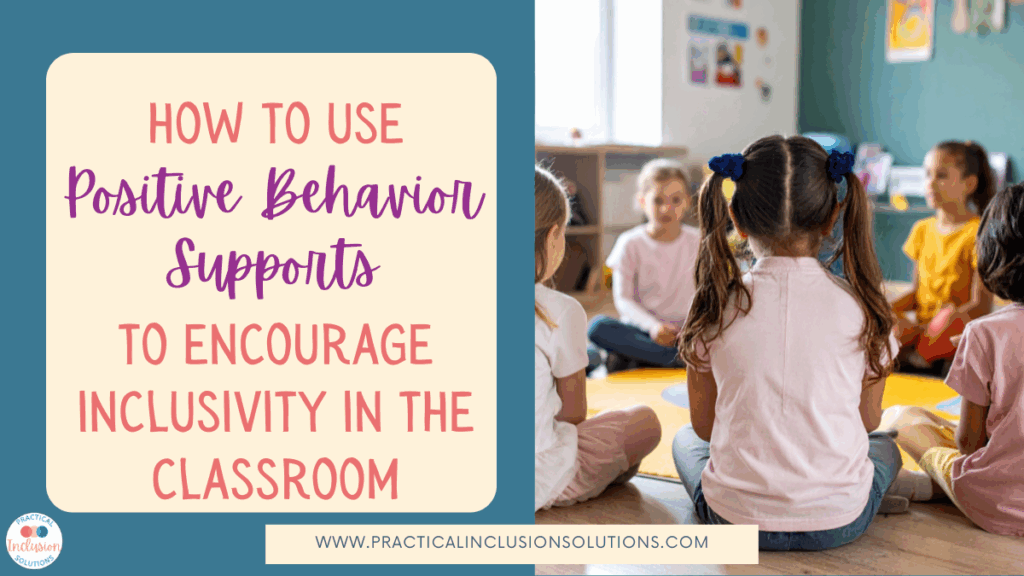Creating an inclusive classroom isn’t just about focusing on academics—it’s also about building a strong sense of community and supporting student well-being. One effective way to do this is by using positive behavior supports to encourage inclusivity. We’ve touched on this topic before, but let’s dive deeper into how these strategies can transform your classroom environment.

An inclusive classroom works best when everyone—teachers, students, paraprofessionals, support staff, specialists, and even visitors—plays a role in shaping the community. With that in mind, here are three practical ways to use positive behavior supports to encourage inclusivity.
1. Celebrate Pro-Social and Inclusive Behaviors
Academic success is important, but it’s equally vital to celebrate the moments that build community. Helping a peer, showing empathy, or inviting someone to join a group are all behaviors worth recognizing.
“Positive behavior isn’t separate from academics; it’s the foundation that allows learning to happen.” — PBIS framework principle
Try this: Create “kindness tickets” or “inclusion shout-outs” for students (and adults!) to hand out when they see others being supportive. Keep them near the door so that anyone entering the classroom can participate.
Why it works: Recognizing inclusive actions makes them visible and valued, encouraging students to continue engaging in them. Over time, this reinforces a culture of acceptance and belonging.
2. Use Positive, Proactive Language
The language we use sets the tone for the classroom. Instead of reacting after negative behaviors occur, proactively shape expectations with positive phrasing.
Try this: Instead of saying, “Don’t leave anyone out,” say, “We include everyone in games and group work.”
Why it works: Positive phrasing highlights what students should do, not what they shouldn’t. This creates clarity, models respect, and encourages students to live up to inclusive expectations.
3. Create Shared Routines for Recognition
Building routines around recognition ensures that inclusivity isn’t an occasional focus—it becomes part of the classroom’s rhythm. Scheduling these practices helps them become natural habits.
Try this: Host a Friday “shout-out circle” where students recognize peers or teachers who were kind, supportive, or encouraging. Or, incorporate it into Monday morning meetings by asking students to share one kind thing they saw someone do over the weekend.
Why it works: These routines give students ownership of classroom culture, normalize peer recognition, and make inclusivity a regular expectation.
Final Thoughts
There are countless ways to use positive behavior supports to encourage inclusivity in your classroom. Some schools even implement schoolwide initiatives that you can build upon and expand. By focusing on positivity, proactiveness, and recognition, you’re not only strengthening inclusivity—you’re laying the foundation for greater academic success as well.
To explore more ideas and strategies, check out these resources:
